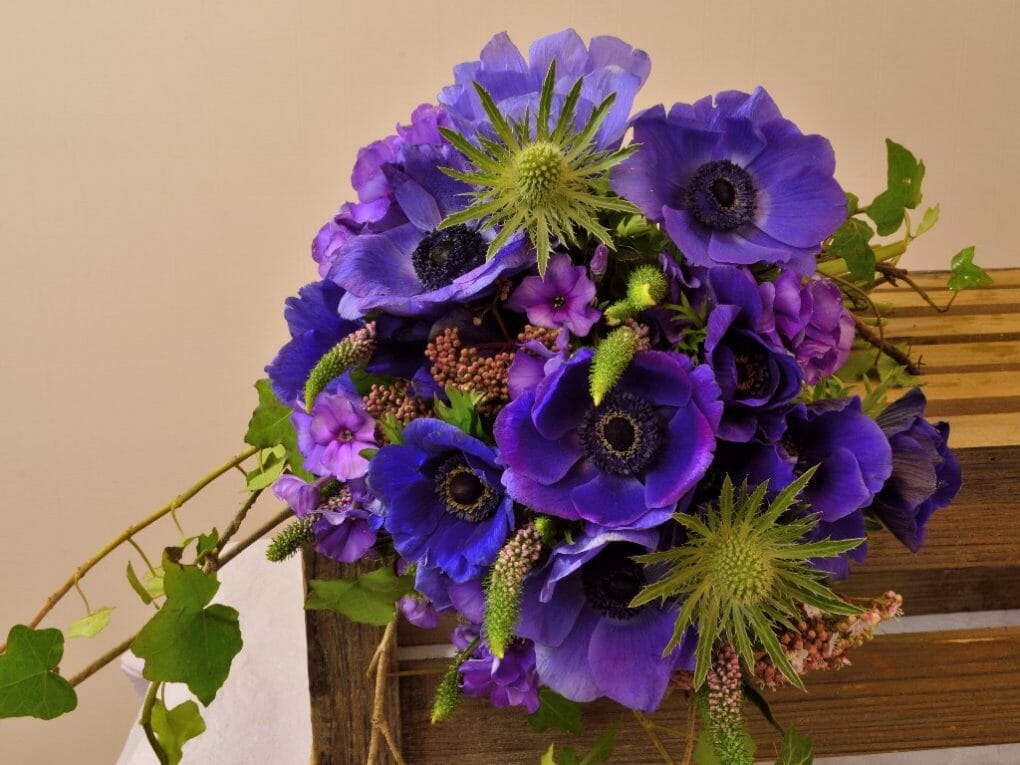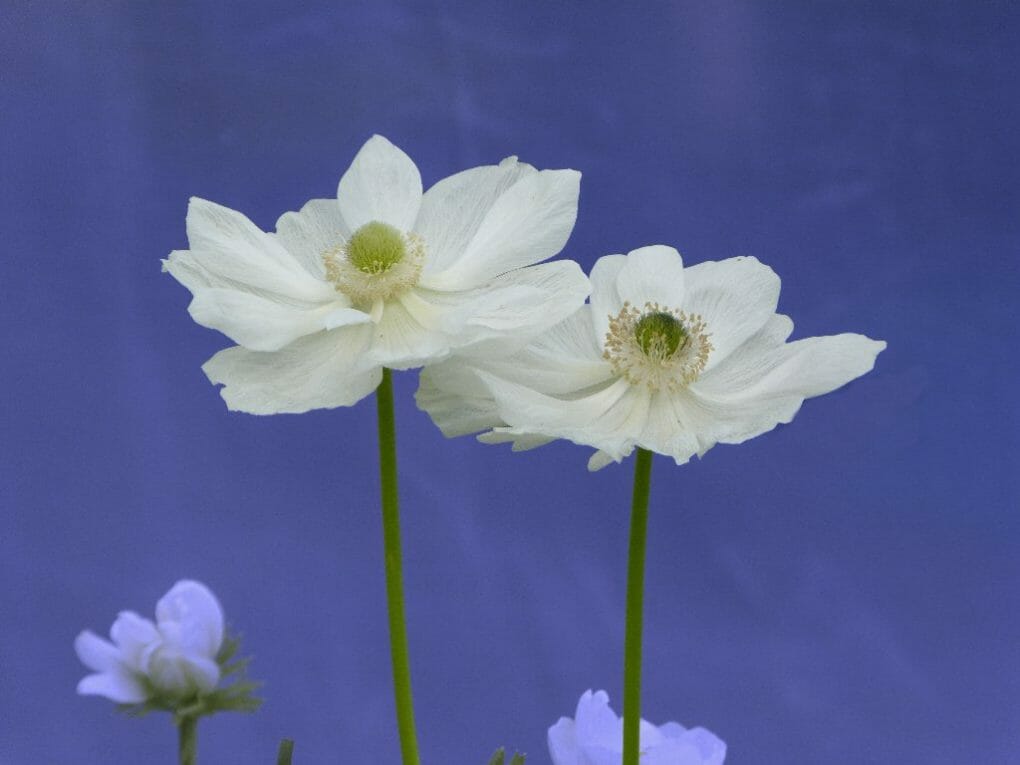When Does Anemone Bloom? | Know the Bloom Time of Different Anemone Varieties

Anemones bloom at different times depending on the species. Most of them blossom in early spring or late summer. Others bloom during the fall season. The flowers of most anemones last for three to four weeks. After the flowers die, leave the leaves on the plant so it can prepare for next year’s flowers.
Table of Contents
Types of Anemones According to Blooming Time
There are many different kinds and cultivars of anemone, but they are usually put into two main groups:
Spring Blooming
This group has flowers that bloom in both spring and early summer. Most of the cultivars in this group are short and start blooming around the same time as daffodils, tulips, and other mid-spring bulbs. Most plants that bloom in the spring are likely native to North America and easy to spread.
Flowers Bloom in Summer and Fall
These two kinds of anemones are put in the same group because most of them are from Japan or China. Most grow a few feet tall and are usually more showy than spring-blooming types. Some can also be very aggressive and spread by both seeds and rhizomes.
There are three main types of anemones based on when they bloom.
- Group 1 comprises species and cultivars that grow from tubers or rhizomes and bloom in the spring. Anemone Blanda (Greek Windflower) and Anemone nemorosa (European Wood Anemone) are in the first group.
- In Group 2, they bloom in the spring and summer. The second group comprises Anemone coronaria and its Cultivars from the de Caen group.
- In Group 3, some plants bloom in the summer and fall. The fibrous roots of these types are what make them stand out. They do best in places with moist soil and a mix of bright and dim light. One species in the third group is the Chinese anemone or Anemone hupehensis.
Bloom Time of Different Anemone Varieties
| Plant | Season of Interest |
| Anemone ‘Dreaming Swan’ (Japanese Anemone) | Summer (Early, Mid, Late) Fall |
| Anemone ‘Wild Swan’ (Japanese Anemone) | Spring (Late), Summer ((Early, Mid, Late), Fall |
| Anemone blanda ‘Blue Shades’ (Grecian Windflower) | Spring (Mid) |
| Anemone blanda ‘Blue Star’ (Grecian Windflower) | Spring (Mid) |
| Anemone blanda ‘Pink Charmer’ (Grecian Windflower) | Spring (Mid) |
| Anemone blanda ‘White Splendour’ (Grecian Windflower) | Spring (Mid) |
| Anemone canadensis (Meadow Anemone) | Spring (Mid, Late), Summer (Early) |
| Anemone coronaria ‘Blue Poppy’ | Spring (Mid, Late) |
| Anemone coronaria ‘Lord Lieutenant’ | Spring (Mid, Late) |
| Anemone coronaria ‘Mount Everest’ | Spring (Mid, Late) |
| Anemone coronaria ‘Rosea’ | Spring (Mid, Late) |
| Anemone coronaria ‘Sylphide’ | Spring (Mid, Late) |
| Anemone coronaria de Caen ‘Bordeaux’ | Spring (Mid, Late) |
| Anemone coronaria de Caen ‘Hollandia’ | Spring (Mid, Late) |
| Anemone coronaria de Caen ‘Mr. Fokker’ | Spring (Mid, Late) |
| Anemone coronaria de Caen ‘The Bride’ | Spring (Mid, Late) |
| Anemone coronaria de Caen ‘The Governor’ | Spring (Mid, Late) |
| Anemone Galilee Pastel Mix | Spring (Late), Summer (Early) |
| Anemone hupehensis ‘Bressingham Glow’ (Japanese Anemone) | Summer (Late), Fall |
| Anemone hupehensis ‘Hadspen Abundance’ (Japanese Anemone) | Summer (Late), Fall |
| Anemone hupehensis ‘Pocahontas’ (Japanese Anemone) | Summer (Mid, Late), Fall |
| Anemone hupehensis ‘Praecox’ (Japanese Anemone) | Summer (Mid, Late), Fall |
| Anemone hupehensis ‘Prinz Heinrich’ (Japanese Anemone) | Summer (Late), Fall |
| Anemone hupehensis var Japonica ‘Pamina’ (Japanese Anemone) | Summer (Late), Fall |
| Anemone hupehensis var Japonica ‘Splendens’ (Japanese Anemone) | Summer (Late), Fall |
| Anemone multifida (Pacific Anemone) | Spring (Late), Summer (Early, Mid, Late) |
| Anemone nemorosa ‘Alba Plena’ (Wood Anemone) | Spring (Early, Mid, Late) |
| Anemone nemorosa ‘Alba’ (Wood Anemone) | Spring (Early, Mid, Late) |
| Anemone nemorosa ‘Leeds Variety’ (Wood Anemone) | Spring (Early, Mid, Late) |
| Anemone nemorosa ‘Robinsoniana’ (Wood Anemone) | Spring (Early, Mid, Late) |
| Anemone nemorosa ‘Royal Blue’ (Wood Anemone) | Spring (Early, Mid, Late) |
| Anemone nemorosa ‘Vestal’ (Wood Anemone) | Spring (Early, Mid, Late) |
| Anemone nemorosa (Wood Anemone) | Spring (Early, Mid, Late) |
| Anemone parviflora (Small-Flowered Anemone) | Spring (Late), Summer (Early, Mid, Late) |
| Anemone quinquefolia (Wood Anemone) | Spring (Mid, Late),Summer (Early) |
| Anemone ranunculoides (Yellow Wood Anemone) | Spring (Early, Mid) |
| Anemone rivularis (Riverside Windflower) | Spring (Late), Summer (Early) |
| Anemone sylvestris ‘Madonna’ (Snowdrop Anemone) | Spring (Late), Summer (Early) |
| Anemone sylvestris (Snowdrop Anemone) | Spring (Late), Summer (Early) |
| Anemone tomentosa ‘Robustissima’ (Japanese Anemone) | Summer (Late), Fall |
| Anemone trifolia (Three-Leaved Anemone) | Spring (Mid, Late) |
| Anemone virginiana (Thimbleweed) | Spring (Late), Summer (Early, Mid) |
| Anemone x hybrida ‘Elegans’ (Japanese Anemone) | Summer (Late), Fall |
| Anemone x hybrida ‘Honorine Jobert’ (Japanese Anemone) | Summer (Late), Fall |
| Anemone x hybrida ‘Königin Charlotte’ (Queen Charlotte) | Summer (Late), Fall |
| Anemone x hybrida ‘Rosenschale’ (Japanese Anemone) | Summer (Late), Fall |
| Anemone x hybrida ‘September Charm’ (Japanese Anemone) | Summer (Late), Fall |
| Anemone x hybrida ‘Serenade’ (Japanese Anemone) | Summer (Late), Fall |
| Anemone x hybrida ‘Whirlwind’ (Japanese Anemone) | Summer (Late), Fall |
| Anemone x lipsiensis (Yellow Wood Anemone) | Spring (Early, Mid, Late) |
Care Tips for Anemones to Encourage More Blooms

Watering
Maintain a consistent level of watering for the anemones. After giving your anemones enough time to become established in their new home, be sure to water them regularly to ensure that the soil remains wet. Because root rot can be caused by overwatering, the soil should be moist but not dripping wet when it comes time to water the plants.
Light
Most anemone species require a location that is exposed to sunlight for at least half of each day to thrive. Although there are cultivars that do well in dappled shade, all of them require daily exposure to sunlight of at least four hours.
Soil
Anemones should be planted in soil that is both moist and well-drained. You can make the soil better for planting by working in some compost, leaf mold, or another type of organic matter first. Anemones are not picky about the pH of the soil in which they grow, but they do best in soil that has a slightly acidic pH.
Deadheading
When it comes to deadheading, do as needed. Anemones do not need to be thinned out or their spent flowers removed to stimulate new growth. Cutting away dead flowers from your plants will not cause any harm to them and will help improve their overall appearance.
You won’t need to cut the wilting foliage of spring bloomers because it is typically inconsequential enough to fade unnoticed as the season progresses. It means that you may keep your garden looking neat and organized without doing so. As a part of your early winter clean-up duties, prune away any dead growth on taller fall-blooming kinds. This will help prevent the plants from seeming disheveled following the first frost.
